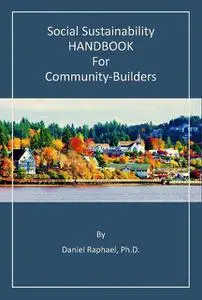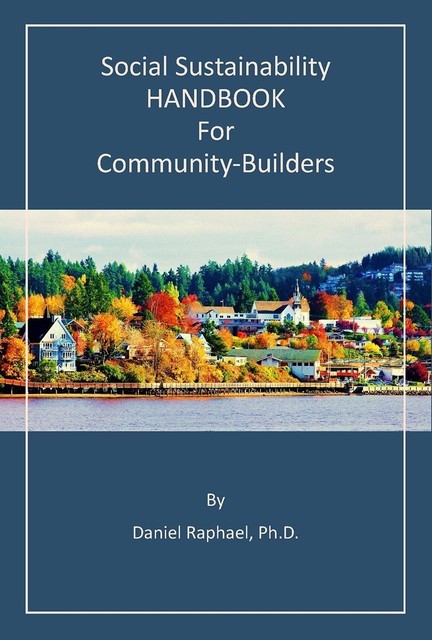«Social Sustainability HANDBOOK for Community-Builders» by Daniel Raphael
English | EPUB | 1.9 MB
English | EPUB | 1.9 MB
Social Sustainability HANDBOOK for Community-Builders clearly describes the two sub-divisions of sustainability. Material sustainability is quantity-object based. Social Sustainability.is quality-value based. Material sustainability is improved by increasing the quantity available while decreasing usage, reusing, recycling and re-purposing material resources. Social sustainability is improved by improving the individual's ability to participate more effectively in their community, which increases their value to their community. Individuals are seen as “social assets”.
The fundamental values that have sustained our species for over 250,000 years include our urge to improve our quality of life, to grow into our innate potential to do so, and to grow and achieve an improving quality of life equally as anyone else would or could. When we apply those same values to the decisions we make as communities, we begin to build sustainable communities. Now, apply that to strategic planning and policy development for all organizations. When that occurs, then organizations and the societies that organizations support also begin to take on the character and social responsibilities of social sustainability.
This is truly a HANDBOOK. Dr. Raphael provides a decision-making process for examining the design of sustainable organizations, social processes and social policies in a unique “Design Team Process.” The Team is composed of 5 — 11 members with four specific roles that create a synergism as the Members work through the “Schematic for Social Sustainability.”
An Internet search for references and descriptions of social sustainability will come up short for this almost totally new topic of social research. It is fortunate that the three core values of social sustainability came to Dr. Raphael in an “Ah-ha!” moment in 2007, and that he used develop in this brief book. Contemplative readers will discover in their own reflective time that these three values are capable of finally answer the “Why?” question of peace as easily as they can be used to answer the “Why?” question of education.
Enjoy!



